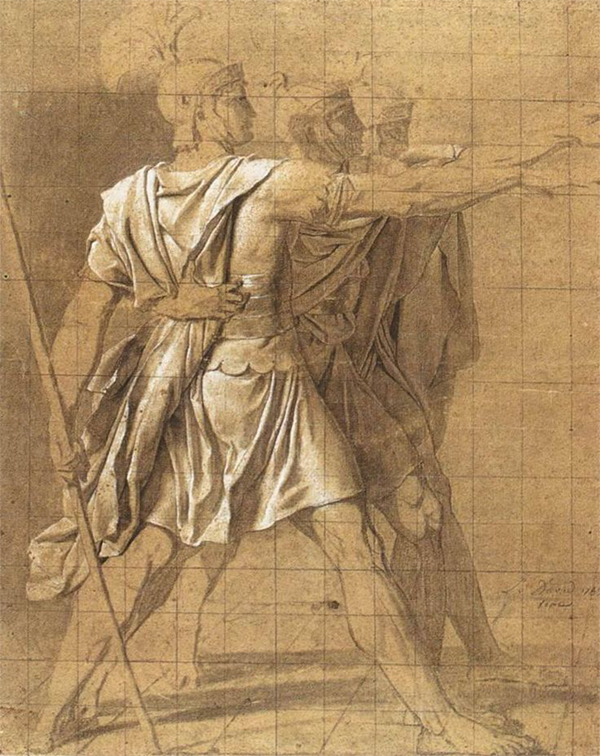Looking at the History of Life Drawing
Polykleitos' Doryphoros (Roman Copy of Greek Original from 2nd Century BCE) – National Archaeological Museum, Naples Though figure drawings don't survive from ancient Greece, one can discern from surviving sculpture that their trenchant study of the figure. Such is the case with the Doryphoros, which is the physical embodiment of sculptor Polykleitos' canon of human proportions.
Some of the world's earliest writings on art reference the importance of study from the live figure. Take, for example, 1st-century writer Pliny the Elder's recounting of the legacy of 5th century BCE Greek painter Zeuxis. In his retelling, he speaks of Zeuxis selecting several women to serve as models for a composition "for the purpose of reproducing in the picture the most admirable points in the form of each." Zeuxis was most likely not the first artist to rely on study of the nude female form, and he was definitely not the last. Generation upon generation of artists turned to life drawing as a means of "building" their compositions. Nowhere was this building more prevalent than in the days of the Renaissance, where masters such as Michelangelo would first construct their figures from nude models on paper and then "clothe" them in the final composition. This construction was an inherent element of the "creative" process, but it also stressed the central necessity of figure drawing.

Michelangelo, Studies for the Libyan Sibyl, c. 1510-1511 Red chalk with charcoal/black chalk accents on paper – Metropolitan Museum of Art, New York
As European artists began to form artistic academies, the study of the figure became more codified. The late Renaissance and early Baroque eras witnessed the development of a new academy system for artistic training. From the establishment of the Accademia di San Luca in Rome in 1577 to the creation of the Académie de Peinture et de Sculpture in Paris in 1648, art academies rapidly developed from merely a network of artists to a relatively systematized sequence of training. This was particularly the case with the Académie in Paris, whose curriculum developed so quickly that by the late 1700s life drawing was an integral part to studio practice. Masters like Neoclassical painter Jacques Louis David, for instance, advocated for his students to draw from live models for the better part of each day.

Jacques Louis David, Study for the Oath of the Horatii, 1784 Black chalk on paper – Musée Bonnat, Bayonne, France
By the following century, such training had developed into its own course that served as the pinnacle of an art students' training following months perfecting the figure's individual aspects (for more on this aspect, check out our recent post on Charles Bargue). Such coursework continues to be a standard component of art schools today and for good reason: regardless of where one's art takes them, the study of the figure from life will never be a disservice. So, the next time you're struggling to compose a figure or sweating a session with a live model, take heart: it is a challenge that is time-tested as means of developing artistic skill. What's your favourite memory from a life drawing course? Share it with us!
